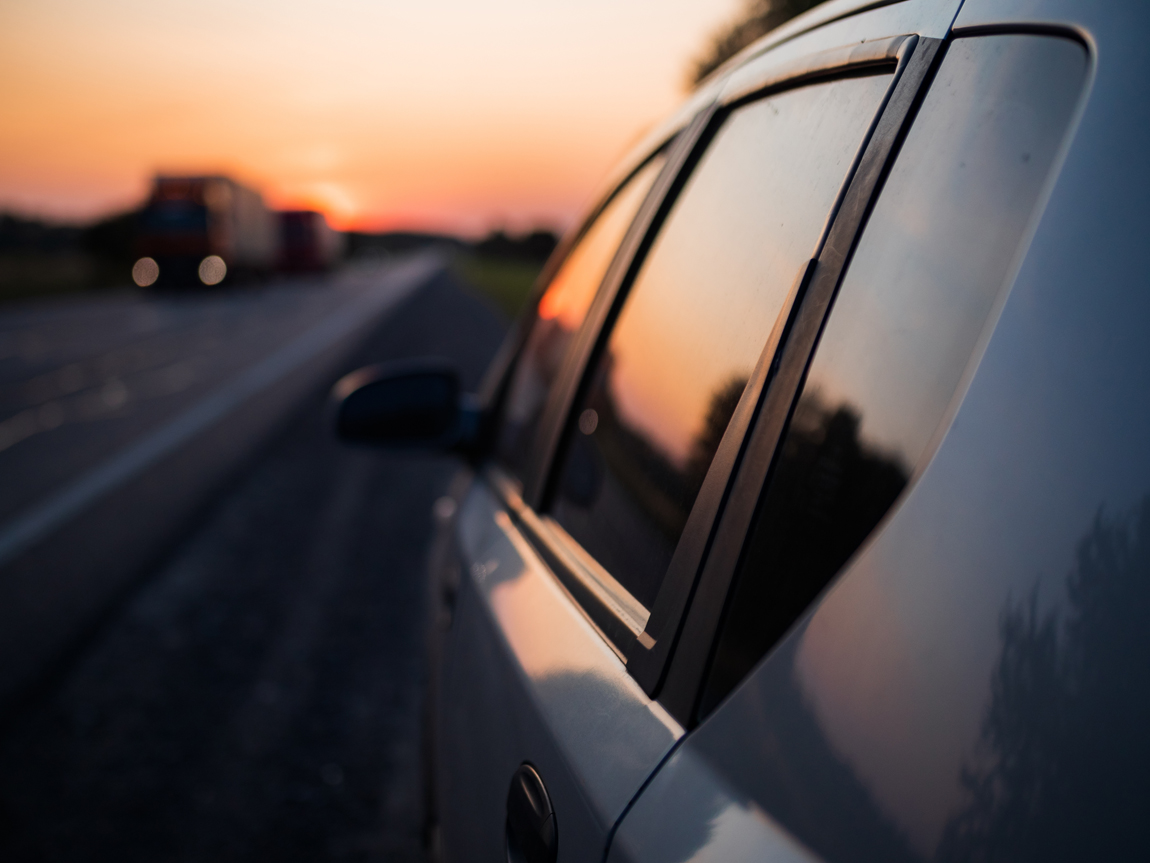Every driver in Arizona knows the summers get extremely hot. There is no worse feeling than getting into a car that has been baking in the Arizona sun for hours. If you are asking if window tint can actually lessen the heat inside your car, the answer is yes!
Does Window Tinting Lessen Car Heat?
Window tinting essentially acts as a barrier between the interior of the car and the sun’s heat. The film utilized in window tinting is usually made of polyester, with some other films using a thin coat of metal fragments and colored dye.
These layers are created to block thermal energy, including ultraviolet (UV) and infrared light, from the sun in order to keep your car cool. The layers do this all while still letting the light shine through. In fact, window tinting can block almost 80% of harmful rays altogether. This also lessens your risk of developing skin cancer. Film that features nano-carbon ceramic technology can efficiently absorb UV radiation and heat.
How Does Window Tinting Work?
Window tinting was designed to reject the thermal rays that increase the temperature inside the car. Window tints will act as a filter by blocking the wavelengths creating heat and passing only ones that generate natural light to the car’s interior. They will prevent interior car heat without blocking the sun’s illuminating feature.
How Much Heat Is Reduced By Window Tinting?
Car window tinting will create a barrier, protecting your car’s interior from the sun. This will reduce the cabin heat while preventing glare all at the same time.
The amount of heat reduced will, of course, vary based on the car, but most drivers can expect a reduction of heat by 35%-45%. Some premium tinting can reject nearly 80% of heat. Ceramic heat provides higher levels of heat reduction. The tint’s carbon particles will absorb infrared light, which is one of the biggest culprits of rising temperatures inside a car.
What Is The Best Window Tinting For Car Heat?
Light transmittance ratings will indicate how effective a particular window tint is. This will include the labels VLA%, VLR%, and VLT%. The VLT% refers to how much visible light will come through the tint. Meanwhile, VLR% indicates how much light is reflected off the tint and VLA% refers to how much light will be absorbed by the film.
Conclusion
Overheated car interiors can be hazardous to your overall health. High interior temperatures can result in heat stroke, dehydration, and possibly release harmful toxins contained in common plastic car components.
Live In The Scottsdale Area? Get Your Inspection Done At Bridwell Automotive Center!
Get your road trip inspection and preparation service done at Bridwell Automotive Center, located at 7171 E Lincoln Dr. Scottsdale, Arizona 85253 or call (480) 948-4781 for more information.






